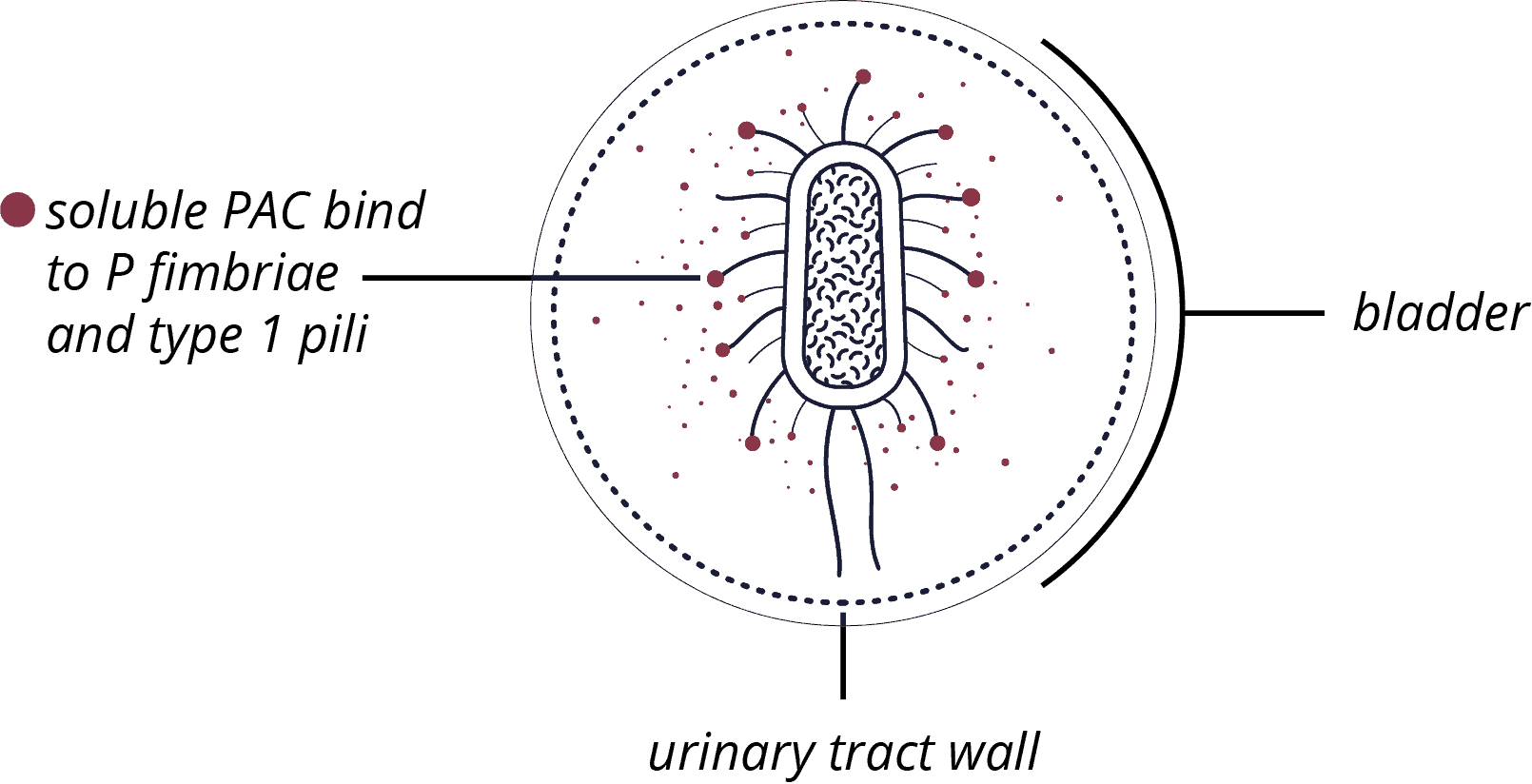As a doctor, you may be prescribing a daily antibiotic to treat UTIs, but also as preventive therapy for recurrent infections. Multiple studies demonstrate that poor compliance, along with repeated antibiotic use leads to resistance and, therefore, makes it harder to prevent infection.
In early 2015 the World Health Organization endorsed a global action plan to tackle antibiotic resistance, the most urgent drug resistance trend compromising your ability to treat infectious disease.¹ On top of bacterial resistance, unwanted side effects of antibiotics beg a new solution for managing recurrent UTIs.
Now, you can feel confident in recommending ellura, a medical-grade, non-antibiotic alternative for preventing UTIs. ellura is a dietary supplement that contains a natural ingredient and has gone through complex extraction and extensive testing to harness the power of its bioactive ingredient, PAC (proanthocyanidins), to work on the offense, trapping and flushing out harmful bacteria before they can make themselves at home.
We recommend your patients take ellura with an antibiotic at the onset of infection and then continue taking ellura once daily to keep their urinary tract in check and to constantly flush out bad bacteria that could lead to future UTIs.






